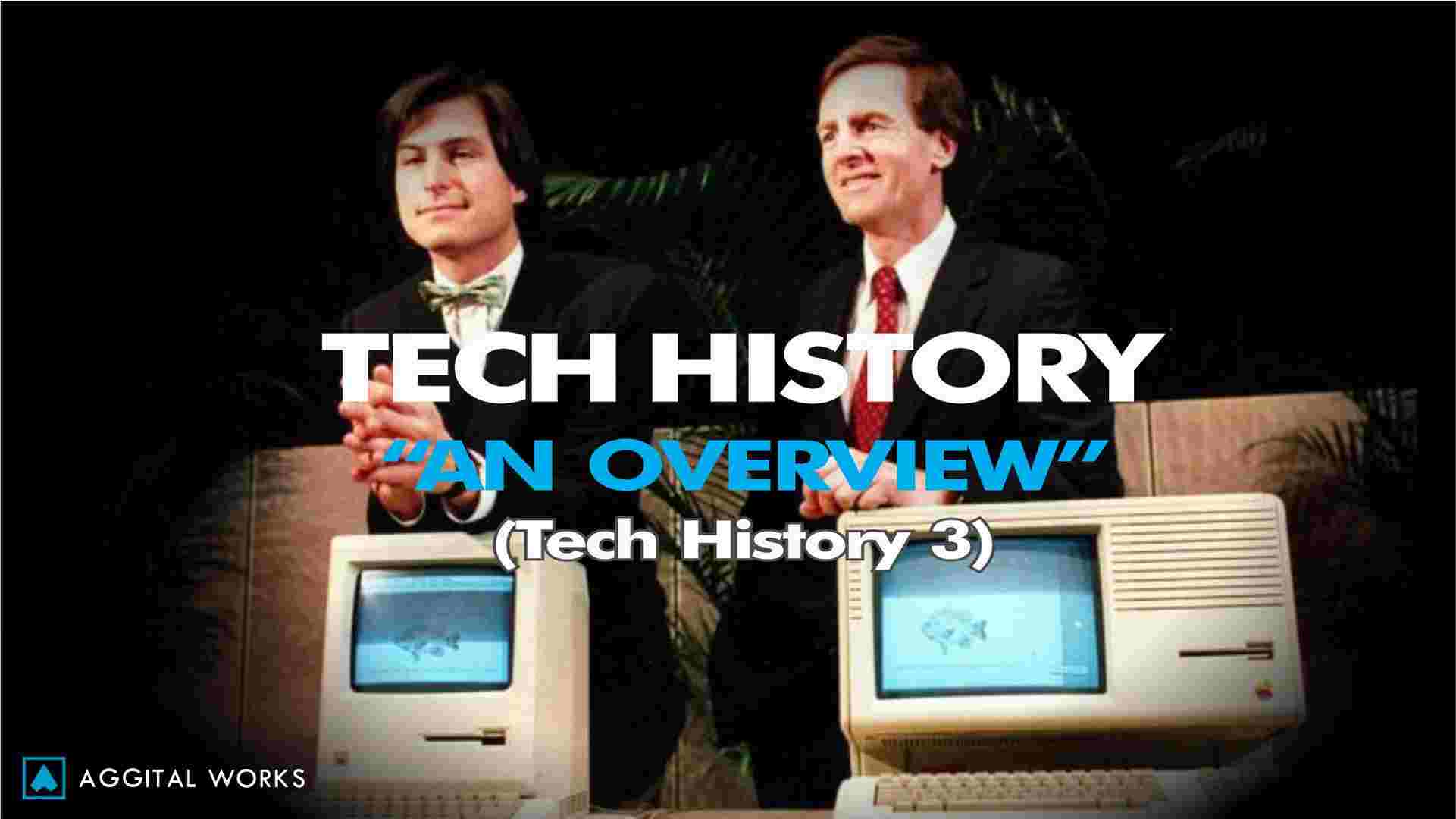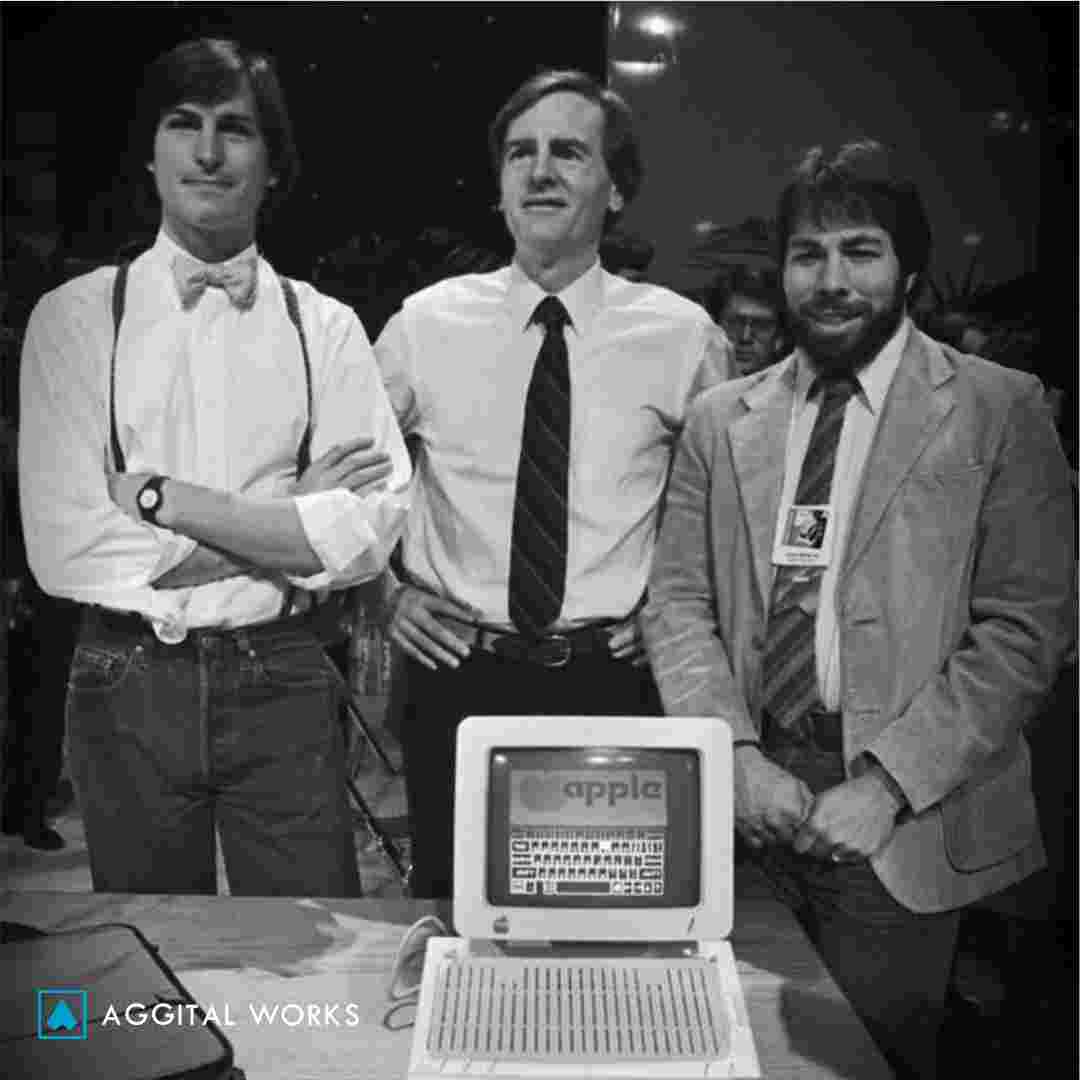Tech History (An Overview) 3

Hi guys! How are y’all doing? Still on Tech History (Unveiling the Fascinating Evolution of Tech History: A Comprehensive but Synoptic Guide) Let’s pick it up where we left off.
PS: If you haven’t read the prequels, please do.
Let’s get right to it!
Tech History
B. The introduction of graphical user interfaces (GUIs) and user-friendly experiences through milestones like the Apple Macintosh and Microsoft Windows not only changed how we interact with computers but also sparked a wave of software innovations that transformed various industries. These advancements, accompanied by powerful applications such as word processing, spreadsheets, and graphic design tools, empowered individuals with new capabilities and revolutionized fields like publishing, finance, and design.
Apple Macintosh and GUI Revolution: The launch of the Apple Macintosh in 1984 brought GUIs to the forefront of personal computing. With its intuitive interface, the Macintosh made navigating the digital landscape accessible to users of all backgrounds. Alongside its release came a suite of software applications that would become instrumental in shaping various industries.
Word Processing: One of the vital software developments for the Macintosh was the introduction of word-processing applications like MacWrite. These tools replaced traditional typewriters and transformed the publishing industry by enabling users to create, edit, and format text documents with ease. Word processing applications made document creation more efficient, allowing for seamless editing, spell-checking, and the ability to produce professional-looking documents.
Microsoft Windows and Expanding Possibilities: Building upon the success of the Macintosh, Microsoft released Windows, expanding the reach of GUIs and opening up new opportunities for software innovation.
Spreadsheets: Microsoft Excel, introduced in 1985, revolutionized data management and analysis. Spreadsheets empowered users with the ability to organize and manipulate data in a visually appealing manner, with features such as formulas, graphs, and charts. Excel became an invaluable tool for finance professionals, businesses, and researchers, streamlining complex calculations and enabling data-driven decision-making.
Graphic Design: Windows also played a significant role in transforming graphic design with the introduction of applications like Adobe Photoshop and CorelDRAW. These software tools provided a range of creative options, allowing designers to manipulate images, create stunning visual effects, and produce eye-catching designs. Graphic design software empowered individuals to unleash their creativity, revolutionizing industries such as advertising, publishing, and digital media.

Empowering Industries and Expanding Capabilities: The combined impact of GUIs and software innovations brought about by the Macintosh and Windows reverberated across industries, forever changing the way professionals worked and unlocking new possibilities.
Publishing and Printing: The introduction of user-friendly word processing and desktop publishing applications revolutionized the publishing industry. Tools like Microsoft Word and Apple’s Pages simplified layout design, enabled precise typesetting, and facilitated the production of high-quality printed materials. These advancements democratized publishing, allowing individuals and small businesses to create professional-grade documents, newsletters, and even books.
Finance and Accounting: Spreadsheets like Excel transformed the finance and accounting sectors, replacing traditional manual calculations and ledger books. The ability to create complex financial models, perform calculations, and generate reports with ease revolutionized financial analysis, budgeting, and forecasting. These tools became essential for businesses, accountants, and financial analysts, streamlining processes and enhancing accuracy.
Design and Creativity: Graphic design software, born out of GUI-based computing, empowered designers to unleash their creativity. With tools like Photoshop, designers could manipulate and enhance images, create stunning visual effects, and develop captivating designs for advertisements, websites, and multimedia presentations. These advancements opened up new avenues for artistic expression and transformed the visual aesthetics of various industries.
Conclusion: The launch of the Apple Macintosh and Microsoft Windows, with their user-friendly interfaces, marked a turning point in computing history. These milestones brought GUIs and intuitive experiences to the masses, paving the way for powerful software applications that transformed industries like publishing, finance, and design. Word processing, spreadsheets, and graphic design tools empowered individuals with.
We’ll stop here to pick it up where we left off in the next article. Do let me know your thoughts in the comment section below.
If you are looking to get an excellent web design company, do click here!
For more reads, click on here.




